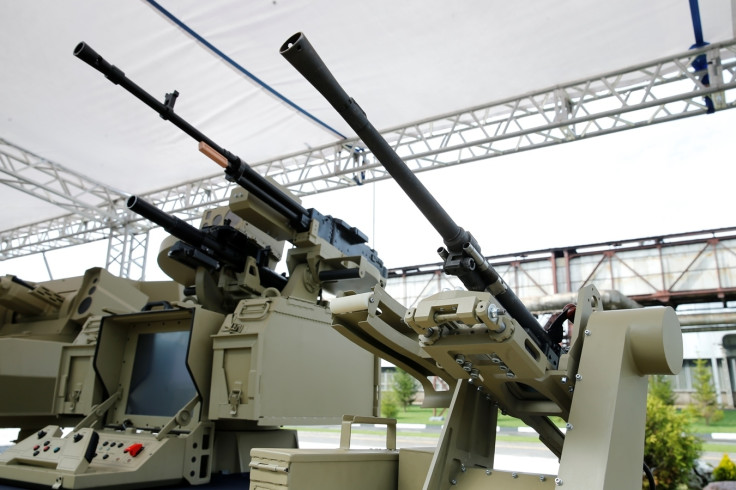Kalashnikov's 'robot strike vehicle' tested in near real combat conditions in Syria
The unmanned robot vehicle will soon be able to fight in sync with aerial drones as well.

Kalashnikov has tested its Soratnik automated fighting vehicle in conditions that were close to actual combat. The unmanned strike vehicle is one of the vehicles that Russia's largest weapons maker promised to showcase last year at an army expo.
While it is not clear if the "Soratnik automated fighting vehicle" is the same one that Kalashnikov spoke about last year, its capabilities, as reported by Tass, are similar.
"The Soratnik automated fighting vehicle has been tested in conditions maximally close to a real combat environment. These trials confirmed the vehicle's characteristics and proved the possibility of using the robotic system at air temperatures of over 30 degrees Celsius," the Kalashnikov Group said, reports Tass.
The scientific potential that Soratnik created as it was being developed and the results of its testing that followed will pave the way for developing robotised fighting machines on similar platforms, Kalashnikov told Tass.
A video posted by Russian media outlets purportedly shows the Soratnik moving along a beach, firing its weapons against targets on its own. Another video, reports Tass, claims that the unmanned vehicle was tested in Syria as well.
The unmanned ground vehicle (UGV) has been designed to conduct reconnaissance, collect and transmit data, and even patrol protected areas. The vehicle can also be used to clear mines and obstacles for troops.
Soratnik in its current form weighs not more than seven tonnes, and it operates in three control modes while reaching speeds of up to 40 kmh. When in drone mode, controlled remotely, it can operate up to a radius of 10 km.
Weapons that Soratnik can carry are 7.62 mm and 12.7 mm machine guns as well as an AG-17A 30 mm grenade launcher, adds Tass. The combat version of the UGV can be fitted with a gun stabiliser and will have the capacity to detect, track, and eventually destroy threats, after determining what type they are, all by itself.
Future plans for the Soratnik involve mounting eight Kornet-EM anti-tank guided missiles on it. It will also be able to work alongside aerial drones to better reach targets, said Kalashnikov Group CEO Alexei Krivoruchko.
The company recently got into the aerial drone business as well.





















